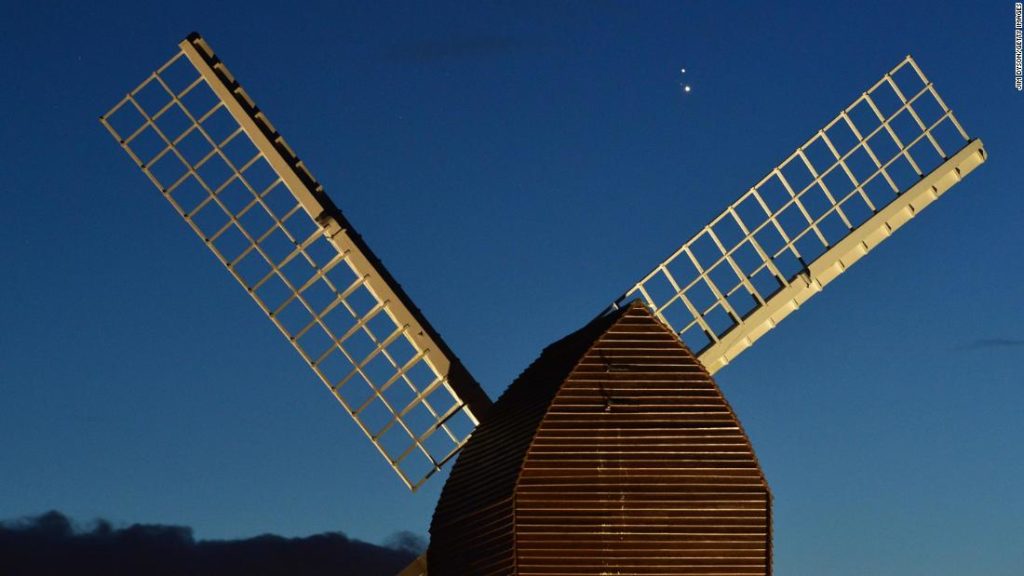The two largest planets in the solar system were just 0.1 degrees apart, or about one fifth of the diameter of the full moon, according to the Royal Astronomical Society in the United Kingdom.
If you missed it Monday night or the sky wasn’t clear, fear not: The two planets only appear to move apart very slowly, and will still appear unusually close together in the coming days.
The best perspective is for those near the equator.
Jupiter will appear brightest and be easily visible. On Monday, Jupiter overtook Saturn and will now appear above the slightly fainter Saturn.
While these two planets may appear close, it is only an optical effect. Jupiter and Saturn were around 500 million miles (800 million kilometers) apart on Monday, despite appearing to be almost next to each other from the Earth’s perspective.
Exceptionally rare
Conjunctions that are this close are very unusual, according to the Royal Astronomical Society, and Jupiter and Saturn were last seen in such proximity in 1623. On that occasion, the two planets were close to the sun in the sky, so they would have been hard to pick out.
The last time the planets were both this close and so easy to see was in 1226, long before the invention of the telescope, the society added in a statement.
If you missed this conjunction and want to see the planets with the same proximity, just higher in the sky, it won’t happen until March 15, 2080 — and then not again until after 2400.
You’ll be able to see it again tonight
Even if you missed Jupiter and Saturn at their closest alignment on Monday, over the next few days the planets will still be visible in the United States at twilight.
The further north you are the less time you’ll have to catch a glimpse of the conjunction before the planets sink below the horizon, said astronomer Patrick Hartigan, a professor of physics and astronomy at Rice University in Houston.
In the UK, it is important to find a line of sight without tall buildings or trees that will block the view with the planets low in the southwest after sunset, the Royal Astronomical Society said.
With the naked eye, the planets will appear as two bright points of light. Binoculars will show those points as slightly larger dots: Viewers may also be able to make out the four largest moons of Jupiter, and possibly Saturn’s largest moon, Titan.
With a small telescope the two planets will be in the same field of view, an exceptionally rare event, and the cloud belts on Jupiter and the rings of Saturn should be visible.
You may also like
-
UK coronavirus variant has been reported in 86 countries, WHO says
-
NASA technology can help save whale sharks says Australian marine biologist and ECOCEAN founder, Brad Norman
-
California Twentynine Palms: Explosives are missing from the nation’s largest Marine Corps base and an investigation is underway
-
Trump unhappy with his impeachment attorney’s performance, sources say
-
Lunar New Year 2021: Ushering in the Year of the Ox

